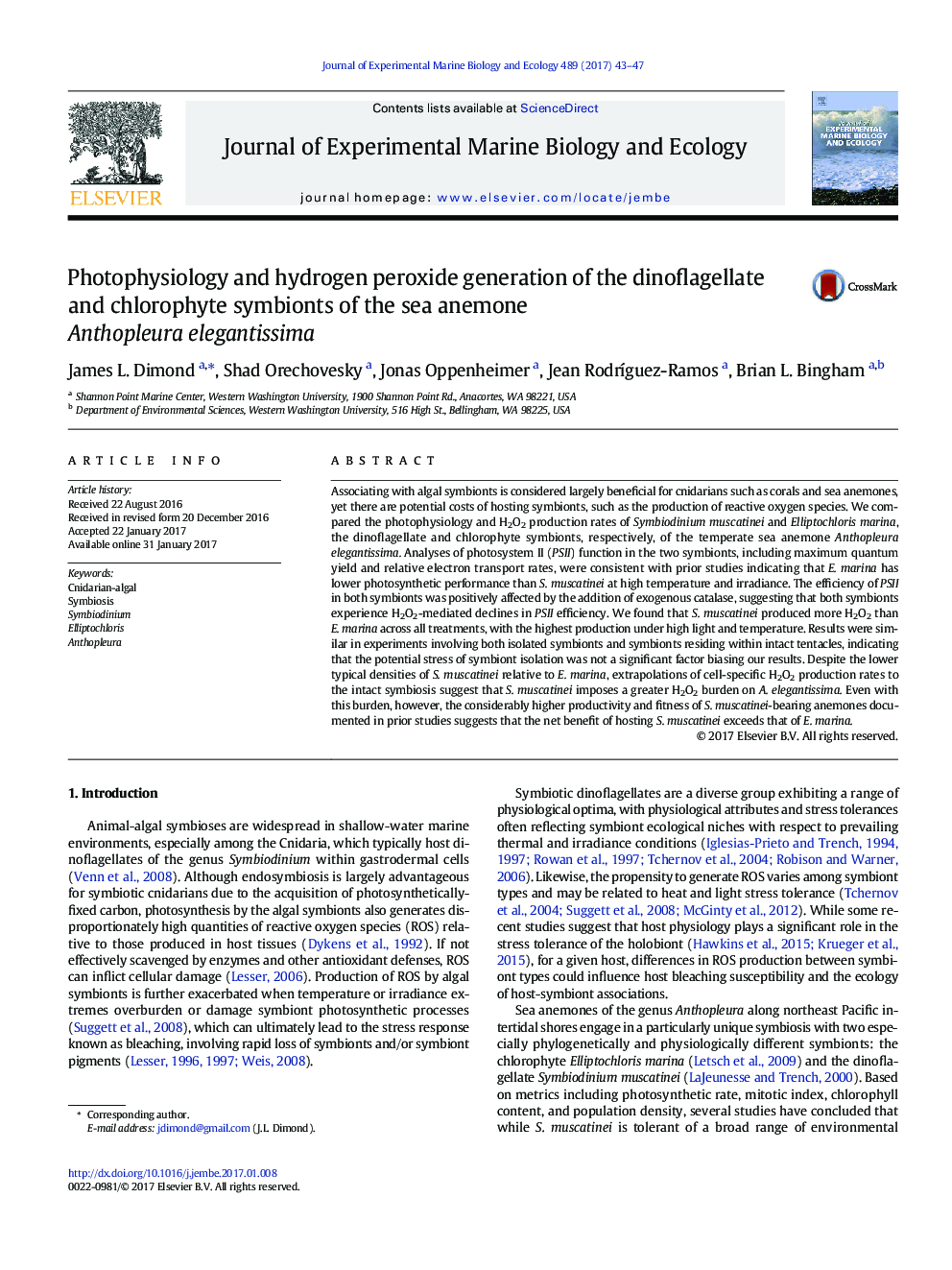| Article ID | Journal | Published Year | Pages | File Type |
|---|---|---|---|---|
| 5744552 | Journal of Experimental Marine Biology and Ecology | 2017 | 5 Pages |
â¢The ability of Symbiodinium to process light photochemically exceeds that of Elliptochloris.â¢Photochemical efficiency in both symbionts was improved by exogenous catalase.â¢Symbiodinium produced significantly more hydrogen peroxide than Elliptochloris.
Associating with algal symbionts is considered largely beneficial for cnidarians such as corals and sea anemones, yet there are potential costs of hosting symbionts, such as the production of reactive oxygen species. We compared the photophysiology and H2O2 production rates of Symbiodinium muscatinei and Elliptochloris marina, the dinoflagellate and chlorophyte symbionts, respectively, of the temperate sea anemone Anthopleura elegantissima. Analyses of photosystem II (PSII) function in the two symbionts, including maximum quantum yield and relative electron transport rates, were consistent with prior studies indicating that E. marina has lower photosynthetic performance than S. muscatinei at high temperature and irradiance. The efficiency of PSII in both symbionts was positively affected by the addition of exogenous catalase, suggesting that both symbionts experience H2O2-mediated declines in PSII efficiency. We found that S. muscatinei produced more H2O2 than E. marina across all treatments, with the highest production under high light and temperature. Results were similar in experiments involving both isolated symbionts and symbionts residing within intact tentacles, indicating that the potential stress of symbiont isolation was not a significant factor biasing our results. Despite the lower typical densities of S. muscatinei relative to E. marina, extrapolations of cell-specific H2O2 production rates to the intact symbiosis suggest that S. muscatinei imposes a greater H2O2 burden on A. elegantissima. Even with this burden, however, the considerably higher productivity and fitness of S. muscatinei-bearing anemones documented in prior studies suggests that the net benefit of hosting S. muscatinei exceeds that of E. marina.
